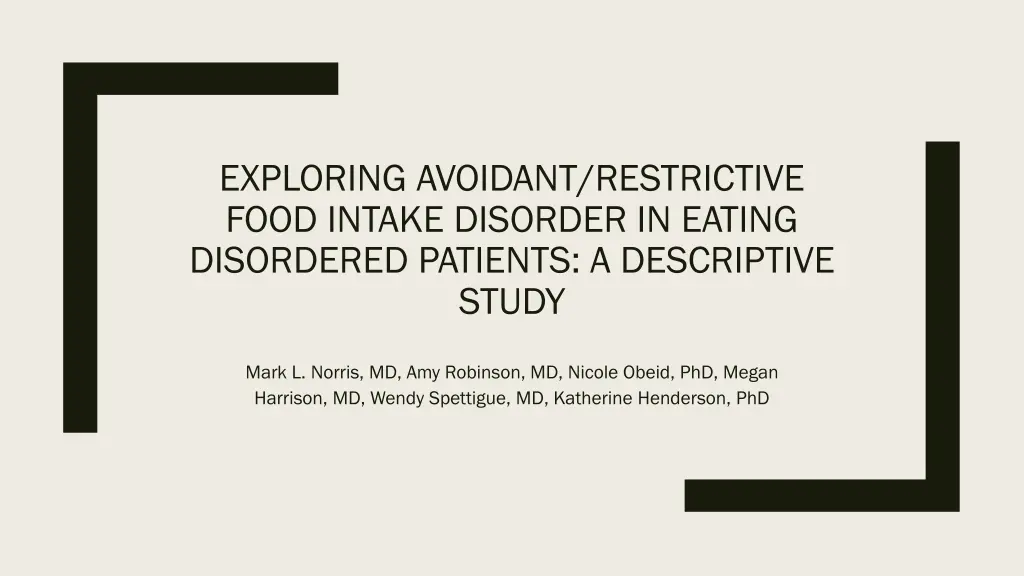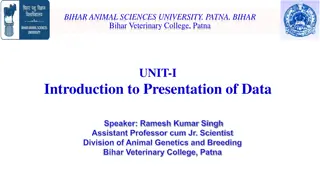
Exploring ARFID in Eating Disorder Patients
This descriptive study compares clinical characteristics of patients with Avoidant/Restrictive Food Intake Disorder (ARFID) to those with Anorexia Nervosa (AN). The study finds that individuals with ARFID are typically younger than those with AN, highlighting the unique nature of ARFID as an eating disorder not driven by weight loss or body image distortion. The research provides valuable insights into ARFID, which is a lesser-known disorder, shedding light on its manifestations and potential causes.
Download Presentation

Please find below an Image/Link to download the presentation.
The content on the website is provided AS IS for your information and personal use only. It may not be sold, licensed, or shared on other websites without obtaining consent from the author. If you encounter any issues during the download, it is possible that the publisher has removed the file from their server.
You are allowed to download the files provided on this website for personal or commercial use, subject to the condition that they are used lawfully. All files are the property of their respective owners.
The content on the website is provided AS IS for your information and personal use only. It may not be sold, licensed, or shared on other websites without obtaining consent from the author.
E N D
Presentation Transcript
EXPLORING AVOIDANT/RESTRICTIVE FOOD INTAKE DISORDER IN EATING DISORDERED PATIENTS: A DESCRIPTIVE STUDY Mark L. Norris, MD, Amy Robinson, MD, Nicole Obeid, PhD, Megan Harrison, MD, Wendy Spettigue, MD, Katherine Henderson, PhD
TOPIC The goal of this study was to assess and compare clinical characteristics of patients with avoidant/ restrictive food intake disorder (ARFID) to those with anorexia nervosa (AN). Avoidant/ restrictive food intake disorder (ARFID) is an eating disorder defined by a disturbance in feeding habits which can result in weight loss and/or malnourishment. ARFID differs from other eating disorders in that it occurs without a goal of weight loss or a distorted body image. Anorexia nervosa is an eating disorder defined by a distorted body image and and an obsession over weight.
RESEARCH HYPOTHESIS Alternative hypothesis: The mean age of those with ARFID differs from the mean age of those with AN. H0: ?1 = ?2 HA: ?1 ?2 A two-sample t-test is used to determine if the two population samples are equal. t-value= 1.9 p-value= 0.021
CONCLUSION P=0.021 which is less than most common alpha values. Therefore, the null hypothesis is rejected. Those with AFRID tend to be of a younger age group than those with AN. The disorder typically presents itself with those aged 12 and younger. This finding is interesting because it supplies some knowledge on a topic that is still very new. AFRID is not widely known, so any research findings will help to inform others and spread awareness. The source of a lot of cases of AFRID is anxiety from a particular experience with food.
CITATION Norris, M. L., Robinson, A., Obeid, N., Harrison, M., Spettigue, W., & Henderson, K. (2013, 12). Exploring avoidant/restrictive food intake disorder in eating disordered patients: A descriptive study. International Journal of Eating Disorders, 47(5), 495- 499. doi:10.1002/eat.22217






















